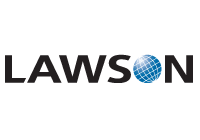Lawson unveils the Smart Office
Integration between Lawson's business intelligence technology and Microsoft's Office products creates a new working environment and workspace for managing business information and collaborative working.

Lawson Software today launched its Smart Office technology, a new presentation layer and interface for using Lawson's enterprise software in conjunction with Microsoft's common Office applications such as Word, Excel and Outlook.
Smart Office makes extensive use of Microsoft's Windows Presentation Foundation to create a customised working interface linking both the common Office applications and Lawson's software tools. Smart Office user interfaces retains the traditional characteristics of Windows and Office, but with more real-time information dropped straight onto the desktop, and with more graphical and visually appealing representation of information.
"Our customers need tools that are designed around people and how they actually interact with each other and with information systems," Dean Hager, senior vice president of product management at Lawson told IT PRO.
The Smart Office interface is a fully customisable workspace that effectively sits on top of the normal Windows desktop. Users and IT departments can deploy modules onto the workspace such as calendars, live information feeds, shared folders, specific project workspaces and collaborative working and file sharing, based on Microsoft's Groove technology.
In addition, users can access elements of Lawson's M3 manufacturing-based software and its S3 service industry-based business intelligence products, depending on which one is in operation in the business, as well as gain graphical views of business intelligence data, such as graphs, charts, and live totals of financial data.
The Smart Office environment allows IT departments to build and host a library of approved widgets for deployment to users, allowing common functionality and application access to be easily deployed to either a single or a group workspace.
"Navigating from screen to screen than has ever been possible within previous Lawson products. Anything that comes up in a web browser can be shaped to fit a screen within Smart Office," said Hager.
Get the ITPro. daily newsletter
Receive our latest news, industry updates, featured resources and more. Sign up today to receive our FREE report on AI cyber crime & security - newly updated for 2024.
In addition to the new desktop workspace, Smart Office provides a more flexible interface for accessing and manipulating information, including being able to pull information out of a Smart Office window and into an Office application such as Excel for editing before passing the manipulated data back into the Lawson system.
"Smart Office is a new way of being able to find information and edit it," added Hager. "As well as being able to customise and personalise the workspace, there is also scope for customising the look and feel of the actual Lawson applications."
The personalisation capabilities of the Smart Office interface allows the IT department to apply a wide range of field changes such as setting individual user default settings, hiding unused fields, changing position and making fields required.
"One of the driving forces behind WPF is that it has been traditionally very hard to develop compelling user interfaces and application environments. WPF lets you build compelling user environments without having to deal with the quirks of legacy user interface environments," added Greg Schechter, a software architect for Windows Presentation Foundation and Silverlight at Microsoft.




